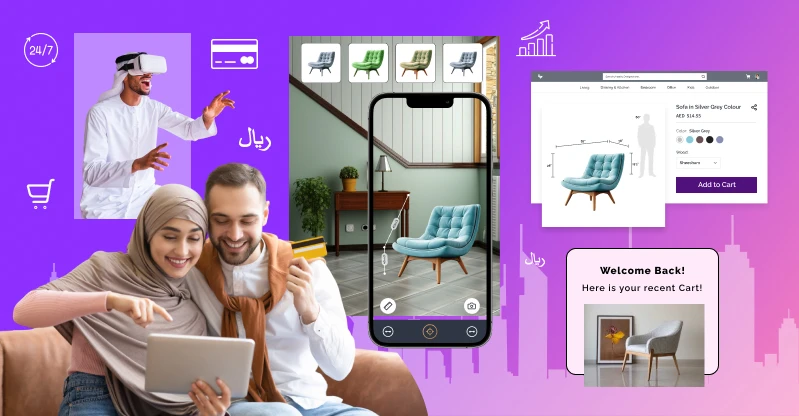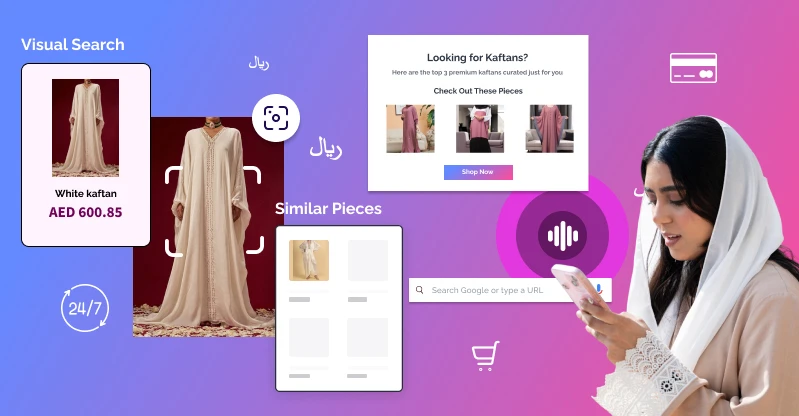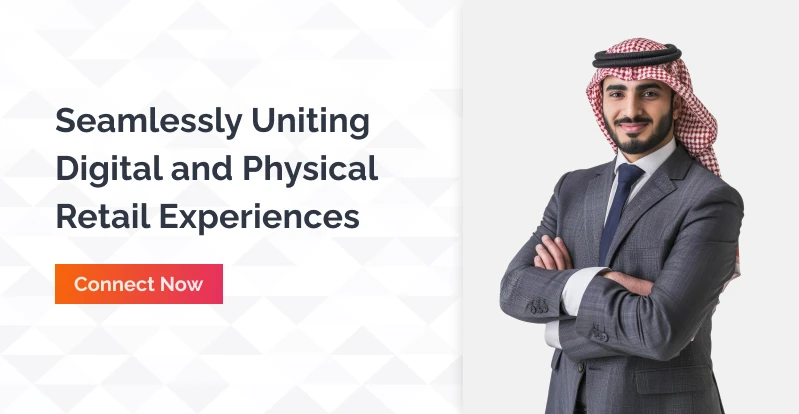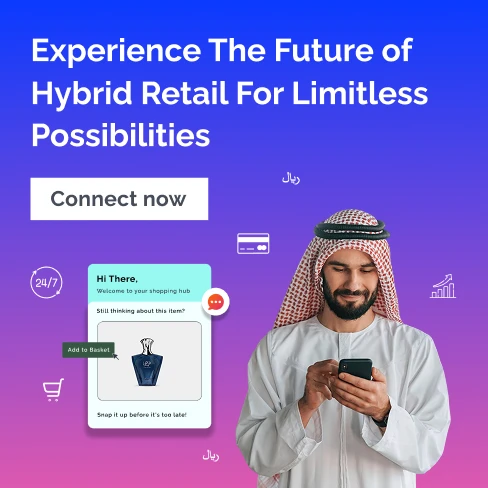The Emergence of Hybrid Retail: Integrating Online and Offline Stores

In the dynamic world of retail, a transformative trend is taking center stage — hybrid retail. This model combines the best of both physical and digital commerce to create seamless, omnichannel experiences for customers. It’s not just about having a website and a storefront anymore; it’s about merging these platforms into a unified ecosystem where consumers can engage, explore, and purchase across channels without friction.
Hybrid retail is not just a trend; it’s the future. Especially post-pandemic, consumer behaviours have permanently shifted. While e-commerce surged, physical stores evolved from mere transactional hubs to experiential centres.
Now, retailers are integrating online and offline strategies, leveraging cutting-edge technologies to meet customers wherever they are — and offering personalised experiences that convert.
Understanding Hybrid Retail
Hybrid retail, often referred to as “phygital retail,” represents the seamless convergence of physical and digital shopping experiences. It goes far beyond simply operating an eCommerce site alongside a brick-and-mortar location.
At its core, hybrid retail is about delivering a unified, customer-centric journey where the barriers between online and offline channels are eliminated. This approach allows consumers to interact with a brand through multiple touchpoints—whether browsing on a mobile app, engaging with a chatbot, or visiting a store—and still experience consistency, convenience, and personalization throughout.
What sets hybrid retail apart is its ability to adapt to changing consumer behaviors and expectations. Shoppers today are increasingly demanding speed, convenience, and personalization.
They might research a product online, check reviews on social media, visit a store to see the item in person, and finally place an order via a mobile app. Hybrid retail makes this journey frictionless by integrating data and technology to support each step.
Retailers employing hybrid strategies use tools like Customer Data Platforms (CDPs), AI-powered recommendation engines, and real-time inventory tracking to synchronize their physical and digital operations.
For example, when a customer walks into a store, the sales associate can access their online browsing history or wishlist to offer personalized service. Similarly, online platforms reflect live in-store stock availability and support options like Buy Online, Pick Up In-Store (BOPIS), or ship-from-store fulfillment.
Ultimately, hybrid retail is about putting the customer in control of how, when, and where they shop. It leverages the strengths of both physical and digital environments to deliver value, build loyalty, and future-proof the retail trends and experience. By offering flexibility, personalization, and operational harmony, hybrid retail is redefining the modern shopping landscape.
Why Implementing Hybrid Retail is Important for the Saudi Market
Hybrid retail is especially important for the Saudi Arabian market due to the country’s unique blend of rapid digital transformation, growing eCommerce adoption, and strong cultural preference for in-person shopping experiences. Here’s why it holds particular relevance in Saudi Arabia:
A Digitally-Savvy, Young Population
Saudi Arabia has one of the youngest and most connected populations in the world. With over 70% of its population under the age of 35 and high smartphone penetration, consumers are comfortable shopping online—but still value physical retail experiences. Hybrid retail allows businesses to meet these digitally native shoppers where they are, offering a seamless blend of online convenience and in-store engagement.
Vision 2030 and Economic Diversification
Saudi Arabia’s Vision 2030 initiative is focused on diversifying the economy beyond oil, with retail and digital transformation playing a central role. Hybrid retail aligns with this vision by encouraging innovation in the retail sector, supporting local businesses, and boosting employment through omni-channel operations and technology adoption.
Rise of eCommerce with Cultural Considerations
While online shopping has surged in popularity—especially post-pandemic—many Saudi consumers still prefer physical stores for high-value or culturally sensitive purchases (like fashion, perfumes, or luxury goods). Hybrid retail allows them to research and personalize their choices online, then experience and confirm them offline, addressing both convenience and cultural trust.
Tourism and Luxury Retail Opportunities
With the opening up of tourism and the increase in international visitors, hybrid retail enables brands to provide personalized and multilingual experiences across channels, enhancing loyalty and conversion rates. Luxury and premium brands, in particular, can benefit from offering personalized VIP experiences that begin online and culminate in-store.
Trends of Retail for Better Online and Offline Integrations
Hyper-Personalized Shopping Experiences
Hyper-personalization uses real-time data and AI to customize the retail experience down to the individual level. Retailers analyze browsing history, purchase behavior, location data, and even social interactions to deliver tailored product recommendations, dynamic pricing, and targeted promotions. In physical stores, digital kiosks and mobile apps pull in this data to create a seamless experience — such as recognizing returning customers and suggesting add-ons based on past purchases. Online, machine learning refines personalization with each interaction.

This level of individual focus boosts customer satisfaction and conversion rates. Tools such as Customer Data Platforms (CDPs), recommendation engines, and behavioral analytics are key to this trend. As consumer expectations rise, delivering curated content across both digital and physical channels is becoming non-negotiable.
Click-and-Collect (BOPIS)
Buy Online, Pick Up In Store (BOPIS) has emerged as a dominant strategy in hybrid retail, especially post-pandemic. It combines the convenience of online shopping with the immediacy of brick-and-mortar fulfillment. Customers can shop from their devices and retrieve items in-store — often within hours. This not only enhances the shopping experience but also increases foot traffic, allowing for upsell opportunities once customers arrive.
Retailers like Target and Best Buy have perfected this model, offering designated pickup spots and streamlined inventory sync. Key tech enablers include real-time inventory management, automated order processing, and geofencing for curbside pickup.
For consumers, it saves time and eliminates shipping delays. For retailers, it lowers fulfillment costs and bridges the gap between channels. BOPIS is here to stay, with innovations like smart lockers and drive-thru pickup elevating the model further.
Augmented Reality (AR) Integration
AR is revolutionizing how customers shop, enabling them to visualize products in real-world settings before making a purchase. In hybrid retail, AR allows customers to try on clothes virtually, preview furniture in their homes, or scan products in-store for digital overlays of information.
Brands like IKEA and Warby Parker use AR to bridge physical and digital by allowing customers to make confident purchasing decisions without needing to be physically present. In-store, AR can turn physical displays into interactive experiences, while online it eliminates friction from the buying journey. AR-powered mirrors, virtual fitting rooms, and mobile-based overlays engage tech-savvy shoppers, especially Gen Z. As devices and 5G connectivity improve, AR will become more immersive and widespread — making it a core pillar of hybrid commerce strategies.
Subscription and Membership Models
Modern retail subscriptions go far beyond magazines. Today’s brands offer curated product deliveries, members-only access, early drops, and premium experiences. Subscription models ensure consistent revenue and customer engagement. Services like Stitch Fix, BarkBox, and Dollar Shave Club personalize deliveries based on user preferences, powered by AI.
Membership programs such as Amazon Prime offer exclusive perks like free shipping, fast delivery, and digital content access. In hybrid retail, these programs create cross-channel loyalty members can shop online and redeem perks in-store or vice versa. Success hinges on strong value propositions, easy cancellation policies, and personalisation.
Retailers are increasingly adding tiers, gamification, and bonus rewards to deepen engagement. When implemented well, subscription models create habitual buying patterns and a dependable revenue stream.
Smart Stores
Smart stores integrate IoT, sensors, AI, and cloud-based systems to create digitally enhanced in-store environments. These locations track foot traffic, analyse browsing behaviour, and adjust layouts in real-time. Smart shelves alert staff when inventory is low, while interactive mirrors allow product comparisons or virtual try-ons.
Amazon Go takes this concept to the extreme with cashier-less checkouts, powered by cameras and AI. In hybrid models, data from smart stores feeds into broader customer profiles, enabling more effective personalization online. Retailers benefit from optimized operations and better customer engagement, while shoppers enjoy efficiency and convenience. As technology advances, expect to see more stores adopting elements like facial recognition, NFC payment, and real-time product locators.
Live Commerce
Live commerce, also known as livestream shopping, merges entertainment with sales. Brands host live video events on social platforms or their own websites, showcasing products in real time while engaging with viewers.
Customers can ask questions, see products in use, and make purchases instantly. This trend brings the excitement of in-store discovery to digital platforms. Companies like Nordstrom, Sephora, and Alibaba have used live commerce to boost engagement and drive impulse buying. In hybrid retail, live commerce is used to promote in-store-only deals or virtual exclusives, creating cross-channel synergy.
It thrives on authenticity and interactivity, making it perfect for Gen Z audiences. The key to success is using charismatic hosts, integrating with social channels, and offering limited-time deals during the streams.
Unified Commerce Platforms
Unified commerce means centralizing all backend systems — POS, CRM, inventory, and analytics — into a single platform. This integration enables a consistent experience across touchpoints, whether a customer shops in-store, online, or via mobile app. Unlike multichannel or even omnichannel approaches, unified commerce ensures all data is live and synced. This eliminates issues like stock discrepancies or fragmented customer profiles. Retailers like Nike and Apple lead in this space, delivering seamless customer journeys with real-time updates. For hybrid retail, unified platforms support features like real-time loyalty updates, seamless returns/exchanges, and personalized promotions triggered by customer location or behavior. It simplifies operations and enhances agility, which are crucial in a fast-paced retail environment.
Retail Media Networks
Retail media networks turn a brand’s owned platforms into advertising spaces. Think of retailers becoming their own ad networks, offering sponsored placements on their apps, websites, or in-store digital signage.
For hybrid retail, it means more relevant in-store promotions and targeted ads online. These ads are powered by first-party data, making them more precise than traditional digital advertising. The result? Higher ROI for brands and more tailored experiences for customers.
This trend not only generates new revenue streams but also strengthens the ecosystem between retailers and their supplier brands.
Flexible Fulfillment Options
Hybrid retail demands flexible order fulfillment. Customers want choices: home delivery, curbside pickup, in-store pickup, ship-from-store, or even same-day delivery. Retailers like Best Buy and Target now offer a mix of fulfillment methods to suit customer preferences.
This flexibility is made possible by advanced inventory management systems and real-time order routing. Retailers can leverage store locations as mini-warehouses, reducing shipping costs and delivery times. Tools like RFID, warehouse automation, and distributed order management systems (DOMS) make this possible.
For customers, flexibility increases satisfaction and convenience. For retailers, it boosts efficiency and minimizes last-mile delivery challenges — a major cost center in e-commerce.
Contactless Payments
Contactless payments, including mobile wallets (Apple Pay, Google Pay), QR codes, and tap-to-pay cards, have become essential in hybrid retail. Not only do they speed up checkout times, but they also reduce physical touchpoints — an important concern post-COVID. In physical stores, contactless technology is now expected.
Online, saved wallet integrations help streamline purchases. The real hybrid power comes when loyalty points, receipts, and personalized offers are tied directly to the payment method. Starbucks and Walgreens have leveraged this well by integrating loyalty and payment into one tap. Retailers adopting contactless tech also gain access to better customer data and faster transaction flows.
Digital Twins for Retail
A digital twin is a real-time virtual replica of a physical asset — in this case, a retail store. Retailers use digital twins to simulate store layouts, customer flow, and shelf space, allowing them to test new configurations or promotions digitally before implementation.
In hybrid models, digital twins integrate with online experiences, allowing shoppers to preview store stock or navigate aisles virtually.
This technology enhances supply chain efficiency, improves merchandising decisions, and supports better in-store planning — all backed by real-time data analytics.
Voice Commerce
Voice-enabled shopping is growing thanks to smart speakers and AI assistants like Alexa, Siri, and Google Assistant. Customers can reorder items, check order status, or find product details hands-free. In hybrid retail, voice search is being used to guide in-store purchases or locate nearby items.
For example, a user could ask their phone where a product is available locally, triggering a buy-online-pick-up-in-store offer. Voice commerce also plays a role in subscription management and customer service, reducing reliance on human agents. As NLP (natural language processing) improves, expect even more conversational shopping capabilities across devices and channels.

AI-Powered Visual Search
Visual search allows users to find products by uploading an image or using their camera, rather than typing keywords. Platforms like Pinterest and Google Lens are leading the way, and retailers are embedding this feature in their mobile apps. In hybrid retail, visual search enhances both online discovery and in-store experiences.
Imagine snapping a picture of a friend’s shoes and instantly finding a match in your favorite retailer’s app — with the option to reserve in-store. This technology shortens the buyer journey, especially for fashion and home décor, where visuals play a huge role. AI ensures more accurate results, even from partial images or different angles.
Experiential Retail Spaces
Hybrid retail is not just about tech — it’s about creating memorable experiences. Experiential stores offer more than products: they offer community, entertainment, and education. Think Apple’s Genius Bars, Lululemon’s yoga classes, or REI’s outdoor workshops. These experiences are supported digitally with apps, check-ins, and post-event content.
In hybrid models, the digital side helps attract attendees, manage bookings, and follow up with personalized offers.
Physical stores transform from transactional centers to immersive brand environments. When done right, experiential retail drives loyalty, builds communities, and generates buzz-worthy content for social media.
Sustainable Hybrid Retail
Consumers are increasingly eco-conscious, and hybrid retail is adapting accordingly. From carbon-neutral shipping to paperless receipts and sustainable packaging, brands are aligning with green values. In-store, features like refill stations or recycling drop-offs merge physical engagement with sustainability goals.
Online, AI helps reduce return rates by suggesting the right size or product. Many hybrid retailers now offer digital wardrobes to discourage wasteful purchasing. Patagonia, Allbirds, and IKEA lead the charge in sustainable hybrid practices. Integrating sustainability across both channels not only supports the environment but also builds trust and long-term customer loyalty.
Conclusion
The future of retail lies not in choosing between digital or physical but in blending both to meet customers wherever they are. Hybrid retail is here to stay, and it’s reshaping how brands connect with consumers.
Retailers that embrace AI, customer data, subscription models, and integrated experiences will thrive in this new landscape. Those who resist risk falling behind.
As emerging technologies like AI, AR, and the Internet of Things continue to evolve, we can expect even more immersive, data-rich, and engaging hybrid retail experiences.
The winners in this space will be those who not only adopt these innovations but use them strategically to delight customers and differentiate their brand. Connecting with a retail experts in the Saudi Arabia can help to implement hybrid retail with ease for ensuring better outcome.




